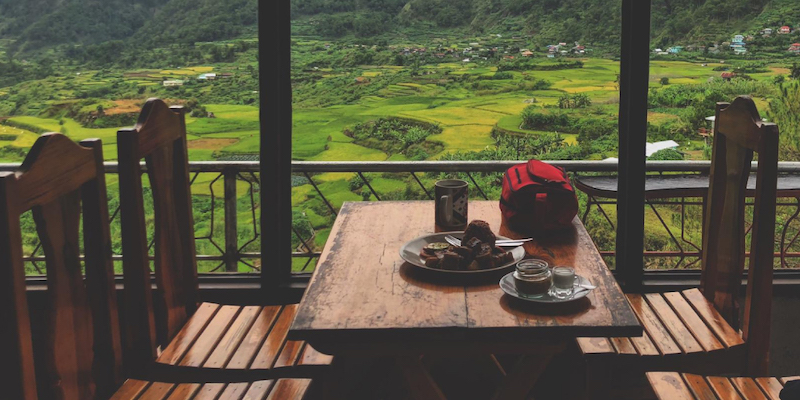REGION OVERVIEW
- Chikmagalur and Sakleshpur, nestled in the Malnad region of Karnataka, are renowned for their cool climate, coffee plantations, and natural beauty. Historically significant for their Arabica and Robusta coffee estates, dense forests, and proximity to heritage sites such as Belur and Halebidu.
- Chikmagalur, known as the Coffee Land of India, is the origin point of coffee cultivation in the country and a major producer of Arabica and Robusta. It houses the UNESCO World Heritage Sites Hoysala temples of Belur and Halebidu and Kudremukh National Park, Mullayanagiri (1,926 m), the highest peak in Karnataka. Since 2009, the region has transitioned from pilgrimage to nature and estate-driven tourism, with destinations like Bababudangiri, Hebbe Falls, and Bhadra Wildlife Sanctuary attracting high-end resorts and homestays.
- Sakleshpur, located along the Bengaluru–Mangalore highway (NH75), is known for its lush hills, coffee and spice plantations, and colonial charm. Though relatively less explored than Coorg or Chikmagalur, it is rapidly emerging as a favoured getaway destination for short-haul weekend tourists from Bengaluru, supported by improved connectivity. Key attractions include Manjarabad Fort, Bisle Ghat Viewpoint, scenic railway treks, and waterfalls like Manjehalli Waterfalls.
- Both destinations enjoy a cool and misty climate throughout the year making them ideal for leisure travel and second home developments. Since 2018, there has been growing interest in vacation homes and managed farmland projects within coffee estates, especially from urban buyers in Bengaluru and Mysuru.
- For this blog, developments across Chikmagalur and Hassan districts are studied.
 Figure 1 Map of Chikmagalur and Sakleshpur Districts
Figure 1 Map of Chikmagalur and Sakleshpur Districts
TOURISM OVERVIEW: CHIKMAGALUR–SAKLESHPUR REGION
- Chikmagalur–Sakleshpur region records an annual leisure tourist footfall around 20 lakhs in Chikmagalur and 15 lakhs1 in Sakleshpur. The average duration of stay is estimated at 2 to 2.5 days. The region experiences peak tourist seasons during post-monsoon months (October to February) and Shoulder Season (March to May) aligned with favourable weather and long weekends.
- An estimated 93–95 per cent of tourists are domestic, with Bengaluru, Mysuru, and Mangalore, serving as primary source markets. Chikmagalur is increasingly expanding its tourist base beyond Karnataka, drawing visitors from India as a part of the Udupi–Mangalore–Chikmagalur circuit. Meanwhile, Sakleshpur continues to attract weekend travellers from Bengaluru, benefitting from improved connectivity via NH75. The leisure segment has witnessed significant momentum, growing at a CAGR of 25.5 per cent from 2018 to 2024. Leisure now contributes 13.6 per cent of total tourist footfall in Chikmagalur and 28.26 per cent in Hassan district, reflecting a notable shift from traditional pilgrimage travel.
- Demand is primarily driven by young couples, families, and small groups seeking weekend retreats and nature-based experiences, along with niche segments such as trekking enthusiasts and heritage trail visitors exploring Belur, Halebidu, and Shravanabelagola.
- The region’s cool, misty climate and scenic hills have positioned it as an emerging hub for second home developments and leisure stays. Chikmagalur scenic appeal and strategic location within a popular travel circuit are boosting its national visibility Sakleshpur untouched natural surroundings and better road access are reinforcing, as a preferred destination for eco-resorts and wellness retreats. The growing popularity of vacation rentals and boutique hospitality projects reflects rising demand for experiential tourism, supported by improving infrastructure and proximity to key urban centres like Bengaluru.
HOSPITALITY OVERVIEW
- The region’s current hospitality landscape is primarily led by regional and local operators, with most resorts offering 25–35 keys. Notable existing branded properties include The Serai and Taj Gateway (29 keys each) in Chikmagalur, and Rosetta by Ferns (125 keys) in Sakleshpur.
- The region is experiencing a notable shift towards upscale hospitality, marked by several upcoming branded developments. These include Taj Chikmagalur (160 keys), Planetree Ferns (70 keys), and Ayatana (50 keys) in Chikmagalur, as well as JW Marriott (160 keys) and Dusit Devarana (75 keys) in Sakleshpur. The upcoming inventory, ranging between 75 and 160 keys, highlights a trend towards larger, scalable projects designed to meet the growing demand from the luxury and MICE segments. Many of these resorts are also integrating hospitality offerings with vacation homes and serviced villas, appealing to experiential traveller’s and second-home buyers seeking premium lifestyle investments.
- As of April 2025, the region houses 338 keys in the luxury segment and 358 keys in the mid-scale segment. By 2030, 50 per cent of the total inventory is expected to be managed by branded operators as against the existing share of mere 20 per cent. Planned luxury inventory is expected to more than double by 2030, while mid-scale supply will be catered by limited existing resorts and homestays.
OUTLOOK
- Chikmagalur and Sakleshpur are poised for strong hospitality growth, driven by improved accessibility via the upcoming Bengaluru–Mangalore Expressway. Both regions are transitioning from emerging to developing markets, with growing interest in destination weddings, wellness tourism, and eco-resorts.
- Chikmagalur is expected to attract corporate MICE demand and high-end leisure travellers, supported by its scenic landscapes and plantation settings. Sakleshpur, with its untapped natural appeal and better road connectivity via NH75, is emerging as a hub for short-haul getaways, corporate retreats, and branded resort developments.
- Being ecologically sensitive, the region faces regulatory restrictions, causing delays in approvals for large-scale resort and real estate projects.
1 Indicates only tourist coming for leisure purpose and does not include temple tourists
2 Meetings, Incentives, Conference and Exhibitions



